
Com uma entrada apenas, cortesia do Roma Pass visitámos o Palatino e o Fórum Romano. Tanto um como o outro são um verdadeiro desafio para entender o que estamos a ver, aqui o aconselhável é levar um bom guia, a Lonely Planet por exemplo tem um dentro do guia de Roma que ajuda a entender melhor o que estamos a ver quando olhamos para alguma ruína do Fórum Romano.
With only one ticket, courtesy of Roma Pass visited the Palatine and Roman Forum. Both one and the other are a real challenge to understand what we are seeing here is the advisable to take a good guide, Lonely Planet has an example within the Rome guide that helps you better understand what we see when we look at a ruin of the Roman Fórum.
With only one ticket, courtesy of Roma Pass visited the Palatine and Roman Forum. Both one and the other are a real challenge to understand what we are seeing here is the advisable to take a good guide, Lonely Planet has an example within the Rome guide that helps you better understand what we see when we look at a ruin of the Roman Fórum.

Entrámos no Fórum como quem vem do Coliseu ou do Palatino e o trajecto que fizémos foi em direcção ao Monte Capitolino. Um dos primeiros edificios que vimos foi a Basílica de Magêncio e foi este imperador que a mandou construir no século XIV. A sua dimensão é ímpressionante com 100 metros de largura no total com três grande abóbadas a 25 metros de altura.
Ao lado está o Arco de Tito, construído em honra do imperador romano que sucessor de Vespasiano. Dizem que serviu de inspiração a um arco famoso, o Arco do Triunfo de Paris. Foi erigido como arco triunfal celebrando a conquista de Jerusalém por parte de Tito Flávio e os relevos que podemos ver representam a viagem de regresso dos soldados romanos trazendo consigo os tesouros da cidade até Roma.
We entered the fórum from the Colosseum or the Palatine and the visit we made was towards the Capitoline Hill. One of the first buildings we saw was the Basilica of Maxentius and was this emperor who had it built in the fourteenth century. Its size is impressive with 100 meters wide in total with three large domes and 25 feet tall.
Next to it the Arch of Titus, built in honor of the Roman Emperor Vespasian that successor. They say that inspired a famous arch, the Arc de Triomphe in Paris. It was erected as a triumphal arch celebrating the conquest of Jerusalem by Titus Flavius and the reliefs that we see represent the return journey of the Roman soldiers bringing the treasures of the city to Rome.
Next to it the Arch of Titus, built in honor of the Roman Emperor Vespasian that successor. They say that inspired a famous arch, the Arc de Triomphe in Paris. It was erected as a triumphal arch celebrating the conquest of Jerusalem by Titus Flavius and the reliefs that we see represent the return journey of the Roman soldiers bringing the treasures of the city to Rome.
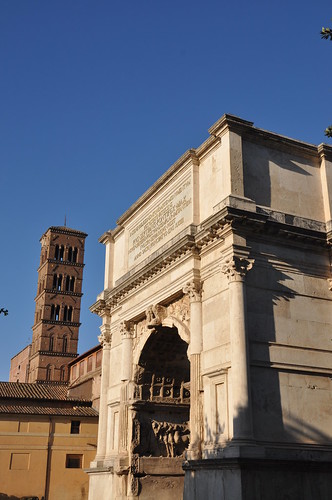
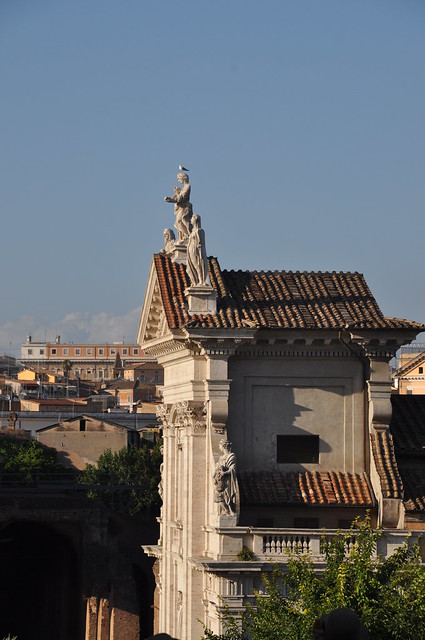
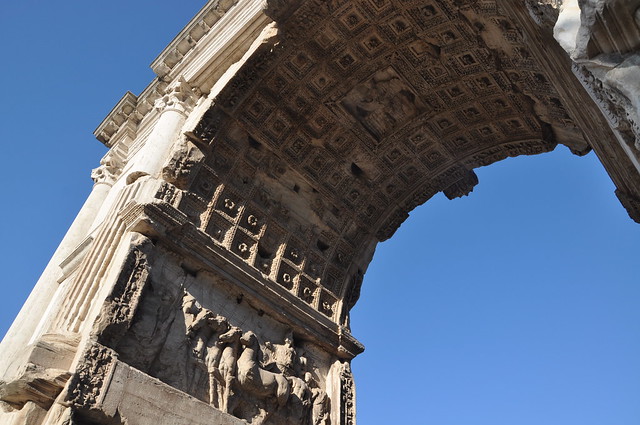
Do alto do Monte Palatino conseguimos ter melhor visão da Casa das Vestais que continha cinquenta divisões distribuídas em três pisos e que albergavam as sacerdotisas que serviam a deusa Vesta. Eram também conhecidas como as virgens vestais.
From the top of the Palatine Hill we had a better view of the House of the Vestal containing fifty rooms distributed on three floors that housed priestesses who served the goddess Vesta. They were also known as the vestal virgins.
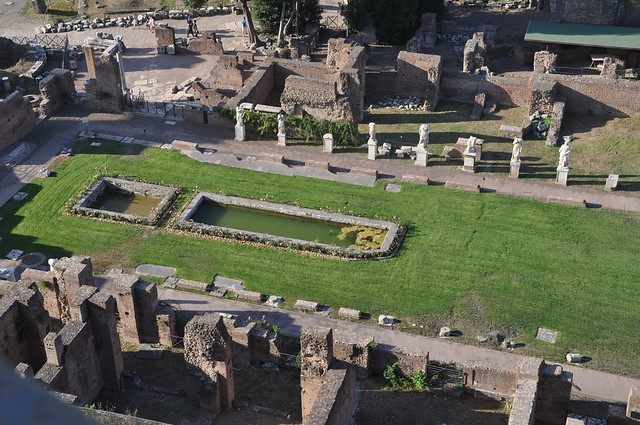
Ao lado o Templo de Vesta, a deusa do terra, do lar e da familia. Dizem que a principal tarefa das vestais era preservar o fogo sagrado neste templo e que se o deixassem extinguir o bem estar de Roma estaria em risco já que se acreditava estar ligado ao culto da deusa Vesta.
Beside it the Temple of Vesta, the goddess of the earth, the home and the family. They say that the main task of the Vestals was to preserve the sacred fire in this temple and that if they let it extinguish the welfare of Rome would be at risk now believed to be linked to the worship of the goddess Vesta.
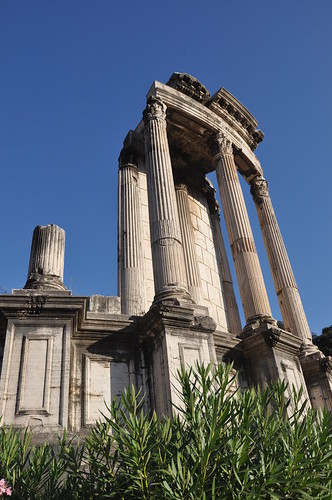

Mais adiante, três colunas representam hoje o que resta do Templo de Castor e Póllux, os dois gémeos que já tínhamos visto representados por Miguelangelo na Praça do Capitólio.
Then we saw three columns that represent today what is left of the Temple of Castor and Pollux, the twins we had seen depicted by Michelangelo in the Capitol Square.
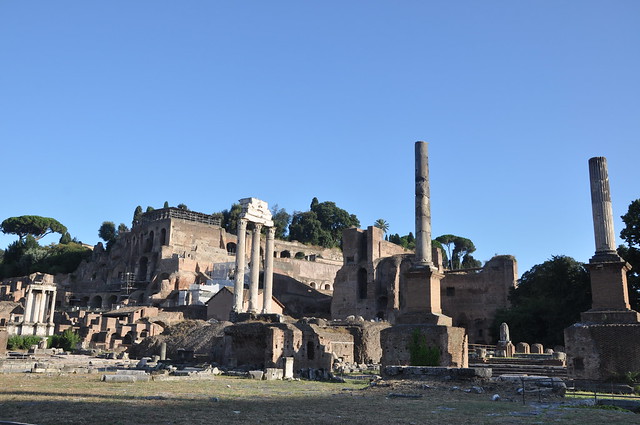
Percorremos um troço da Via Sacra e vimos o Templo de Saturno. As colunas que vemos hoje são do século III, as inscrições em latim indicam que foi reconstruído após um incêndio. Funcionou como a Casa do Tesouro, onde guardava o ouro e prata. A sua associação a Saturno advém da Era Dourada da Mitologia Grega e era Saturno que governava nessa altura estando por isso associado á prosperidade e estabilidade.
We've come a section of the Via Sacra and saw the Temple of Saturn. The columns we see today are from the third century, the Latin inscriptions indicate that it was rebuilt after a fire. Used as the Treasure House, where they would keep the gold and silver. It's association with Saturn comes from the Golden Age of Greek mythology and was Saturn who ruled at that time and was therefore associated to prosperity and stability.

Continuando o nosso trajecto já muito próximos do Monte Capitolino vemos o Arco Septímio Severo. Outro dos arcos triunfais que podemos ver em Roma, este com os relevos que detalham a batalha do imperador romano contra os partos. Foi construído em 203 d.C.
Continuing our journey already very close to the Capitoline Hill we see the Arch Septimius Severus. Another of the triumphal arches in Rome, we can see in this the reliefs detailing the battle of the Roman emperor against the Parthians. It was built in 203 A.D.
Continuing our journey already very close to the Capitoline Hill we see the Arch Septimius Severus. Another of the triumphal arches in Rome, we can see in this the reliefs detailing the battle of the Roman emperor against the Parthians. It was built in 203 A.D.
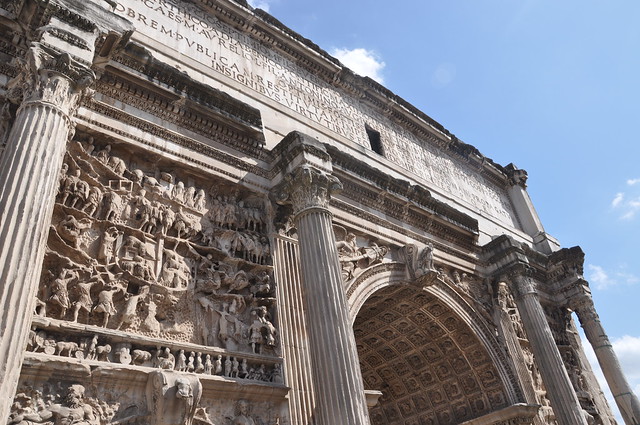
Muitos mais monumentos fazem parte do complexo Fórum Romano, ainda que temos que puxar pela imaginação não é dificil pensar que este foi um grande centro político e social da era do Império Romano.
Many more monuments are part of the Roman Forum, still we have to use our imagination is not hard to think that this was a major political and social center of the era of the Roman Empire.
Many more monuments are part of the Roman Forum, still we have to use our imagination is not hard to think that this was a major political and social center of the era of the Roman Empire.
Our guide of:

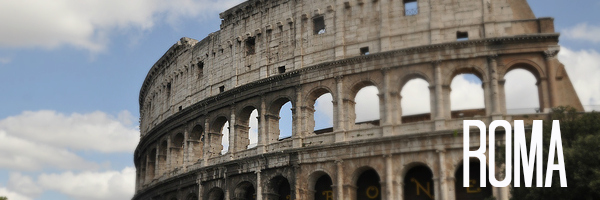
É um prazer para os sentidos. Uma cidade dentro de outra.
ResponderEliminar(Apenas um pequeno reparo: atenção ao título do post.)
Saudações!
Obrigada pelo comentário e pela visita. Espreitei o seu blog e tenho a certeza de que o vou fazer mais vezes gostei muito e é uma oportunidade de matar saudades de Portugal.
ResponderEliminarMarta